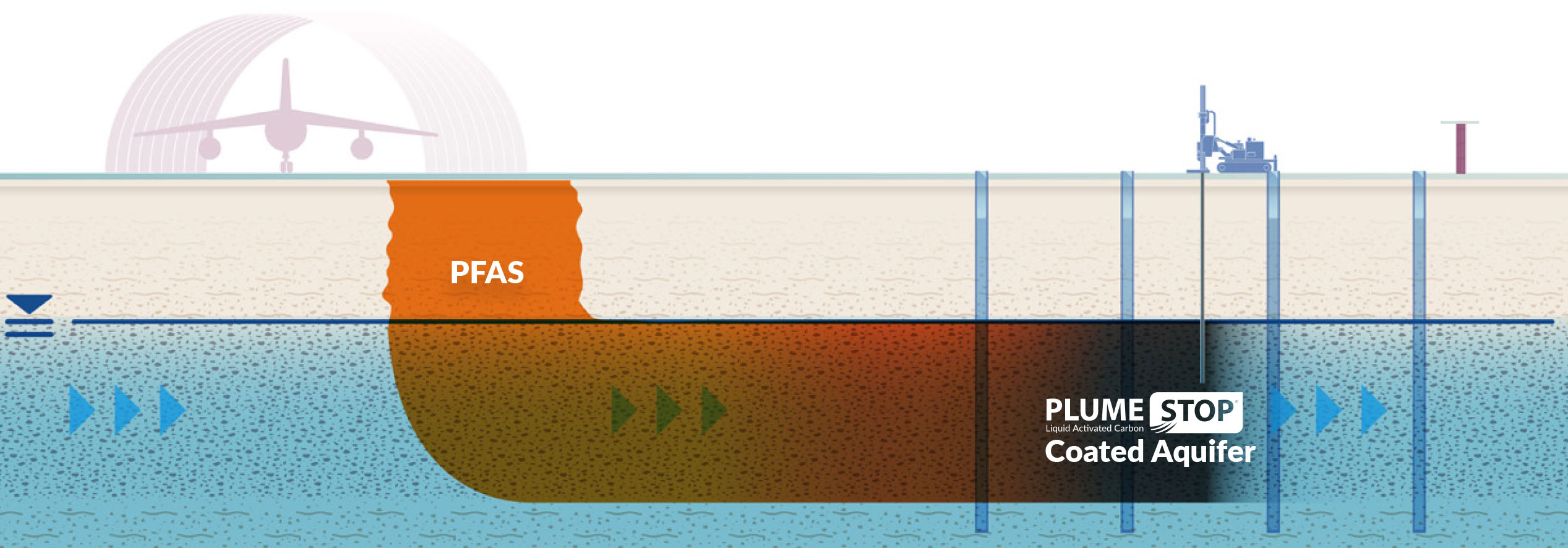Innovative PFAS Treatment Solutions for Safer Water
The raising frequency of PFAS contamination in water supplies requires a critical exam of ingenious therapy solutions. Advanced filtration modern technologies and novel chemical therapies existing encouraging methods for reducing these consistent pollutants. In addition, emerging bioremediation methods use a more lasting strategy to dealing with PFAS challenges. As regulatory structures continue to adjust, recognizing the efficiency and scalability of these options becomes critical. What effects do these developments hold for public health and wellness and ecological restoration, and exactly how can stakeholders properly apply them in varied contexts?
Overview of PFAS Contamination
PFAS contamination has actually become a significant environmental and public health and wellness worry. Per- and polyfluoroalkyl materials (PFAS) are a team of synthetic chemicals recognized for their determination in the environment and body, leading them to be commonly referred to as "forever chemicals." These substances have been commonly utilized in numerous markets, including firefighting foams, water-repellent fabrics, and food product packaging, primarily as a result of their water- and grease-resistant homes.
The widespread use of PFAS has caused their discovery in dirt, water materials, and even in the blood of humans and animals. Studies have linked PFAS direct exposure to many health concerns, consisting of developing effects in babies, immune system disorder, and different types of cancer. Additionally, the ecological persistence of these substances complicates their degradation and removal, raising problems about long-lasting ecological influences.
Regulative bodies are progressively carrying out stringent standards to keep an eye on and reduce PFAS degrees in drinking water and other ecological tools. As recognition of PFAS contamination grows, it has become vital for communities and markets to look for efficient treatment solutions to mitigate direct exposure and protect public health and wellness.
Advanced Filtration Technologies
As the seriousness to deal with PFAS contamination intensifies, progressed filtration innovations have emerged as an essential element in the removal efforts focused on getting rid of these consistent chemicals from water resources. These technologies leverage innovative systems to effectively target and capture PFAS substances, which are infamously resistant to conventional therapy approaches.
One of the most appealing methods is making use of granular activated carbon (GAC), which adsorbs PFAS particles because of its high area and permeable framework. This approach has been commonly carried out in both community and commercial setups, demonstrating significant decreases in PFAS focus. Additionally, ion exchange materials have actually gotten grip, specifically made to selectively bind PFAS ions from water, thus facilitating their elimination.
Membrane layer purification technologies, such as reverse osmosis and nanofiltration, additionally show efficiency in PFAS elimination by literally separating impurities from water - pfas management. These systems can achieve high levels of pureness, making them appropriate for alcohol consumption water applications
Chemical Therapy Innovations
Numerous chemical treatment developments are being explored to successfully deal with PFAS contamination in water supplies. One appealing approach involves the usage of innovative oxidation procedures (AOPs), which make use of effective oxidants such as ozone, hydrogen peroxide, or chlorine dioxide incorporated with UV light to break down he said PFAS substances right into much less hazardous materials. This method has actually shown efficacy in lab settings, revealing prospective for scalability in real-world applications.
An additional innovative technique is the advancement of ion-exchange materials especially created to target PFAS. These resins can selectively adsorb PFAS substances from water, permitting their removal during treatment processes. Current developments have actually enhanced the effectiveness and capability of these resins, making them a desirable alternative for water treatment facilities.
Additionally, scientists are exploring using chemical agents like persulfate and ferrous ions to improve the destruction of PFAS in infected water. These representatives can generate chain reaction that facilitate the failure of consistent PFAS compounds.
Arising Bioremediation Techniques
Current developments in chemical therapy innovations have led the way for discovering bioremediation methods as a viable choice for resolving PFAS contamination. Bioremediation utilizes the natural metabolic procedures of microorganisms to break down or change toxins, making it an enticing strategy for dealing with consistent pollutants like PFAS.
Arising methods in bioremediation consist of making use of genetically crafted microbes that can especially target and damage down PFAS substances. These microbial strains are being created for their enhanced degradation abilities, boosting the effectiveness of the removal procedure. Additionally, scientists are exploring the capacity of plant-assisted bioremediation, where specific plant species may uptake and withdraw PFAS from contaminated soil and water.
Another appealing approach is the application of bioaugmentation, which includes presenting valuable bacteria into contaminated atmospheres to enhance the degradation of PFAS. This method can help with much faster remediation timelines and boost general effectiveness.

Regulatory Frameworks and Requirements
A comprehensive regulative framework is essential for efficiently handling PFAS contamination and ensuring public wellness defense. The raising acknowledgment of per- and polyfluoroalkyl compounds (PFAS) as toxic wastes has actually motivated various federal and state companies to develop standards that control their presence in water products. The U.S. Environmental Security Firm (EPA) has actually established health advisories and is pursuing establishing enforceable limits for PFAS in alcohol consumption water.
State-level laws vary significantly, with some states adopting more stringent standards than those proposed by the EPA. These guidelines usually consist of maximum contaminant levels (MCLs) for details PFAS substances, monitoring requirements, and reporting responsibilities for water energies. Furthermore, arising structures concentrate on the remediation of polluted websites, highlighting the demand for you can try these out efficient treatment innovations.

Final Thought
Finally, the development and implementation of innovative PFAS treatment solutions are essential for resolving the prevalent problem of water contamination. Advanced filtration technologies, chemical therapies, and arising bioremediation strategies collectively provide a complex strategy to efficiently lower and break down PFAS levels. As regulatory structures remain to develop, integrating these innovations will certainly be necessary to secure public health and wellness and restore the integrity of infected water resources, eventually adding to a cleaner and safer atmosphere.